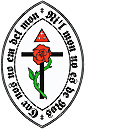"For us... it is imperative that one be
an active Free-Mason and have attained at least the
degree of Master Mason in order to be a candidate
for the clergy. We estimate this to imply that the
members of the clergy have symbolically passed through
the death of the physical body in the first degree
and that of the soul in the third degree, and that
they have thereby attained the immortal, liberated
and androgynous spirit. This also permits us to have
women amongst our clergy - as in the 2nd and 3rd centuries
where female bishops held the title of 'Sophia'."
-René Chambellant, T. Renatus in ecclesia
All historians and commentators agree that
modern Freemasonry has its immediate origins in the Master
Mason builders of the great European Gothic Cathedrals of
the Middle Ages. These builders were themselves closely
tied to the Knights Templar and to the Templar building
associations, heirs to the Central European monastic associations
and the Byzantine Colleges which, in their turn, had their
origins in the Roman Collegia. Via this chain, Freemasonry
can be said to date back to the sixth century B.C.
This uninterrupted chain leads us back
to the important Initiatory Schools of Egypt,
in which certain adherents had attained the highest degrees
of initiation. Moses, Pythagoras and Plato are believed
to be among these high initiates.
The Masonic bond with the Order of the
Temple, both initiatory and as holders of the principal
traditions, is undeniable. upon the dissolution of the Knights
Templar at the hands of the Inquisition, several of its
members took refuge in European countries where the Order
still existed or in the Lodges of the Masonic builders.
Those who had found refuge in Scotland, consequently, founded
Scottish Freemasonry. The religious and monastic aspect
of the Order of the Temple has also been transmitted through
the centuries and forms an interior part of our own ecclesia
which holds the succession of the Johannine Church, also
sometimes called the Primitive (meaning 'original') Church,
or simply the Christian Church.
To the ancient builders, all of life's
acts were intermingled with religious meaning. The work
had a sacred character because it symbolized the creation
of beings and things by the Divine. So the builders worked
on the sites, in Lodges, where only the people of the profession
were admitted and the secrets of construction were transmitted
from Master to student. The products of their endeavors,
the imposing cathedrals, were and are still the true Esoteric
Books of Wisdom where the Masters of that age wrote
down the inherited knowledge of the mysteries of antiquity,
hidden in the symbols of the buildings themselves and
the sculptures adorning them. These ancient builders,
however, were not just architects or stone cutters. During
the construction of these monuments, the members met to
work upon metaphysical research and philosophical teachings.
The end of the great operative period of construction
marked the beginning of that which we now call speculative
where the philosophical aspect of the initiatory work has
continued to the present time.
All authentic Initiatory steps aim at awakening
the adherent. The best possible instruction cannot give
Knowledge because the awakening cannot be provoked except
by a systematic introspection which must be supported by
the knowledge of deep-seated psychic mechanisms. The object
of initiation is to guide the inidividual towards this Knowledge
(Gnosis) by an interior illumination, projection,
and understanding of the *self* at whose center is the transcenent
Light. The initiatory method is
an essentially intuitive path and that is why Freemasonry
uses symbols to provoke this enlightenment, since these
symbols speak the language of the unconscious.
The initiation transmitted throughout
Freemasonry is a kind of spiritual alchemy, having as its
goal a real transformation of the individual, a personal
blossoming, and a personal realization. While all Masonic
bodies are considered part of the larger tradition, in today's
present age, many of the more recognized Masonic institutions
have moved even further away from the operative
methods of our ancient brethren. What has come to pass is
that rather than remaning speculative (implying
an intellectual and theoretical method), much of modern
mainstream Masonry has become spectatorial. As
such, we feel it important to distinguish between "regular"
Masonry and "esoteric" Masonry and recommend those
interested, in the most sincere way possible, find an esoteric
Masonic body with which to become affiliated. As for the
Eglise Gnostique, our principal connection has been with
the Ancient
and Primitive Rite of Memphis-Misraïm for many
years, and so we provide that link for you for more information,
although any Masonic body, regular "mainstream"
Masonry, Co-Masonry, are viable options. If in question,
merely ask.
|



